We’re halfway the sampling party. Every day, the various sampling tools are in use from morning to night. Besides various ingenious sample devices that were especially designed for sediment sampling we’re using simple household utensils.
Photo: CarolCotterill@ECORD_IODP
Photo: AnnaStepanova@ECORD_IODP
In the cores, we’re finding a wide range of sediment types: sometimes sands, but mostly various sorts of fine-grained sediments. And we’re seeing distinct differences depending on the location and sediment depth: sometimes the sediments are “striped” showing alternations of dark and light layers, sometimes they are more homogeneous in composition. Alternating dark and light sediment layers can form in different ways: They can, for example, be indicative of low oxygen conditions in the bottom water. In Baltic fresh water sediments, we also find “varves”, layers that are formed annually – for further details, see the blog of Sandra Passchier.
Photo: CarolCotterill@ECORD_IODP
And we’re finding other really interesting things as well: like these strikingly bright blue spots in the sediment. That’s the iron-phosphate mineral vivianite. It is known to form from porewaters that are rich in dissolved iron and phosphate. It is most common in freshwater sediments.
Photo: CarolineSlomp@ECORD_IODP
Although there is every little time to do anything besides work, we’re trying to see something of Bremen by foot when we occasionally have dinner or a drink in town. Nice city center, but dark! When you are on the day shift, you don’t see any daylight when not working!
Photo: SarahStrano@ECORD_IODP
Photo: SarahStrano@ECORD_IODP
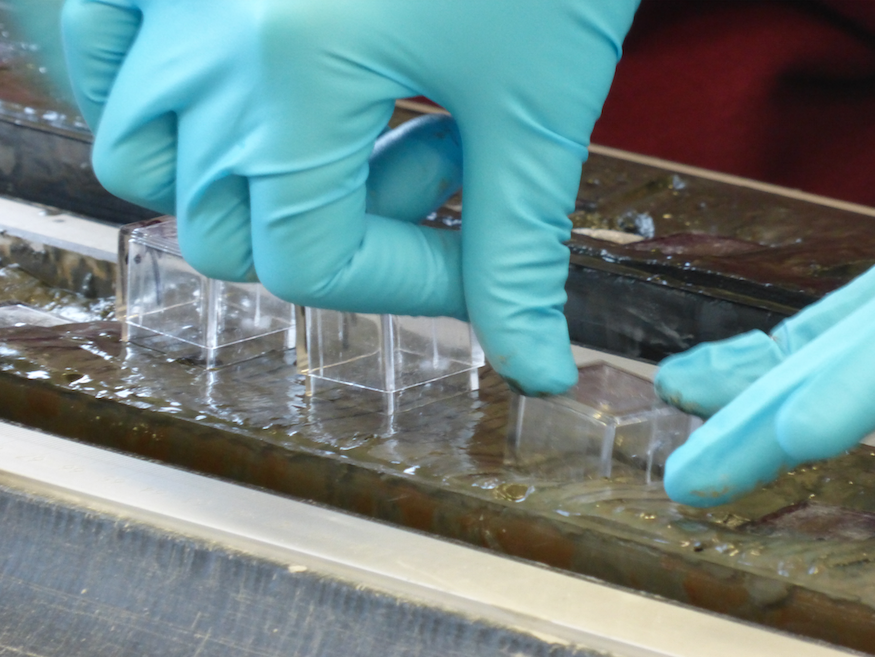
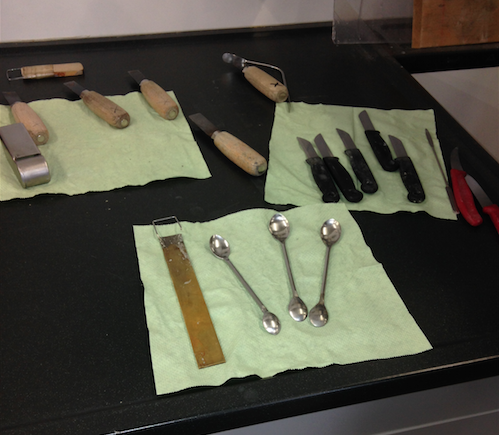
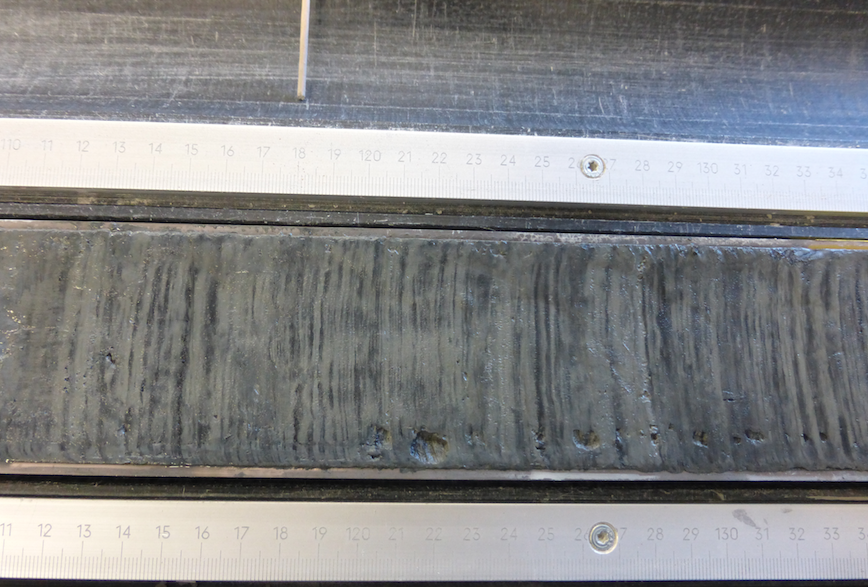
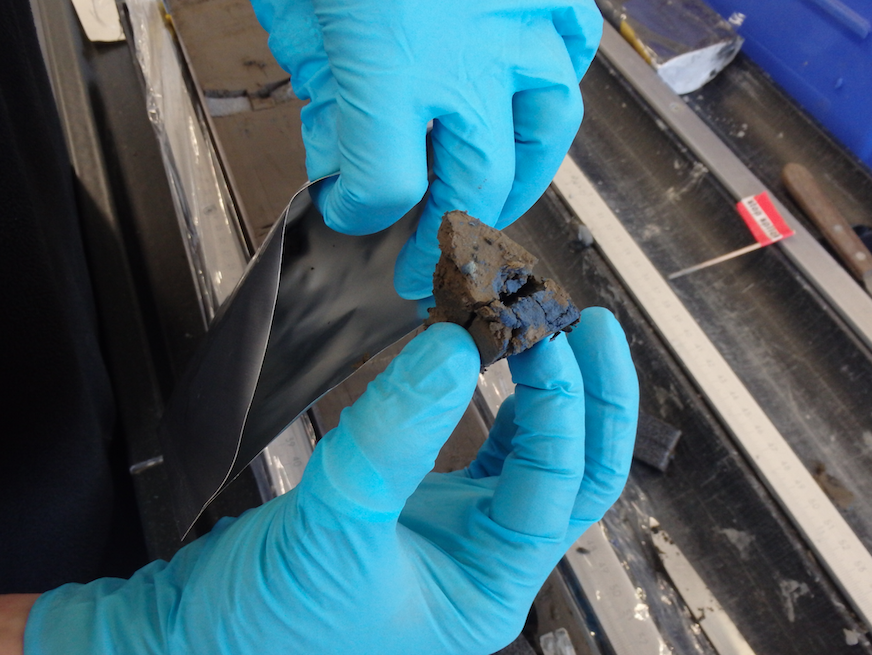
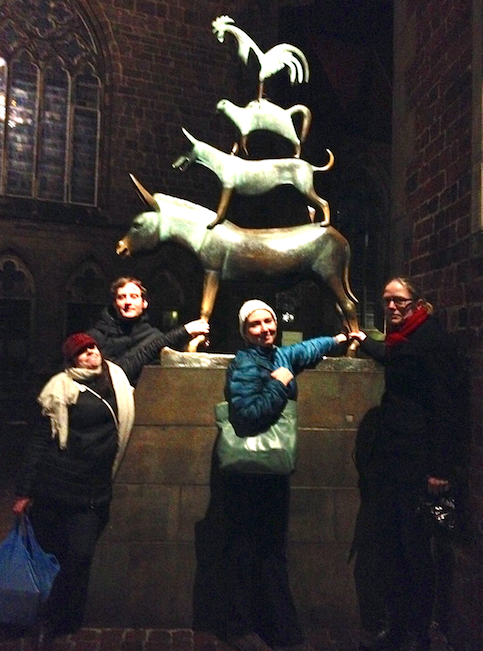
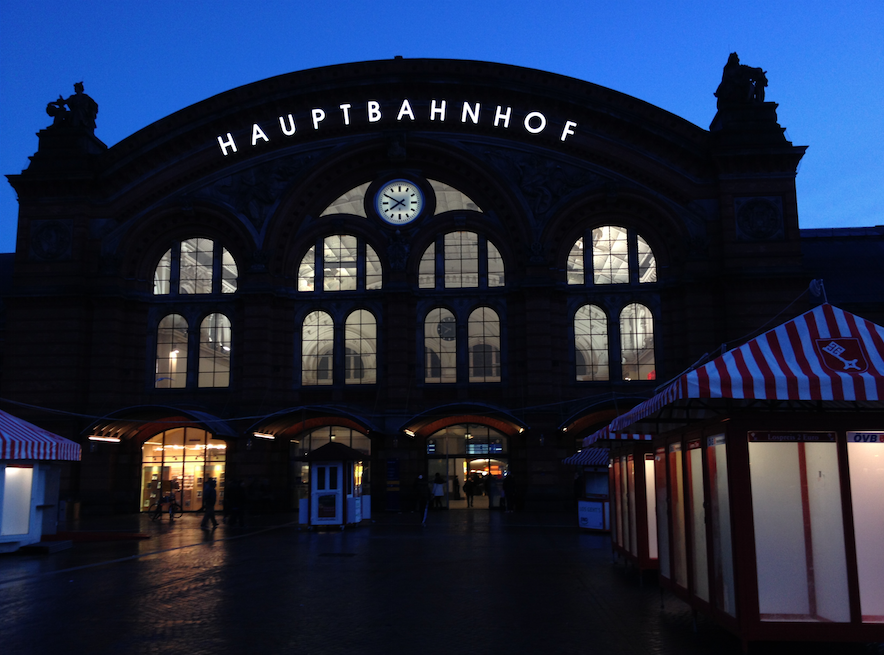
 RSS Feed
RSS Feed
